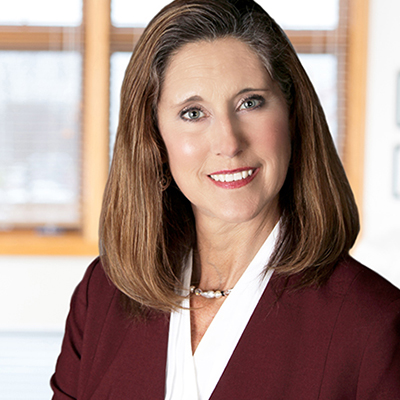On those rare occasions when I am not optimistic about the prospects of mid-size law firms, I am very pessimistic. Oh yes, mid-size firms are the best setting for practicing law. And many of the current challenges to the legal profession play to mid-size firms’ strengths. And some legal subject areas are positively booming. But except for that, things look daunting.
So this title to a recent Dr. George Beaton blog post – “10 reasons BigLaw managing partners are not sleeping very well” – braced me for a jolt. Challenges to BigLaw most often are not so different from the challenges to MidLaw.
But then I examined Beaton’s 10 reasons. One by one, I liked MidLaw’s chances.
1. Client Power
Large corporations now have alternatives to hiring law firms. They can bring work in-house, or use alternative legal services providers, or exercise their formidable bargaining power for large engagements. Those are challenges that must vex the large law firms. MidLaw on the other hand, can appeal both to the largest clients and also to smaller clients. They can be closely engaged with clients in the management of their legal function. And, if a law firm is not fixated on having every bit of a client’s work, mid-size firms and their clients can find the balance where legal services are rationally allocated among alternatives, and law firms are sized and structured to do the work they are best suited to do (which is not all of it).
2. New Competitors
Alternative legal services providers are taking work that law firms once did. Good! New, alternative providers have found opportunities because law firms were doing work that they were not best suited for. Now, alternative providers are taking the routine, repeatable work. They are making the big investments in technology. Mid-size firms need not staff up or make the investments needed to provide those services. This is an opportunity. Stay smaller, learn to work with (and, to use) the alternative providers, to focus on what lawyers do best, and to build the kinds of firms and professional cultures around the smaller bases that this makes possible.
3. Big Four Accounting Firms Taking Legal Work
It was never about occupational licenses. From MidLaw’s perspective, what’s the difference between BigLaw and BigFour? There is also competition from smaller accounting firms, but the point’s the same. What’s the difference between competition from other law firms and competition from accounting firms? Accounting firms (all sizes) remain great sources of referrals for MidLaw firms. Monitor those referrals. They are a good indicator of where your sweet spot may be. If you elect to compete for the same work accounting firms do, then understand how you can do that work better-cheaper-faster than the competition.
4. Technology is a Challenge for Everyone
Mid-size firms may be better positioned to navigate new technology than others. The place between the largest firms and the smallest looks like a good place to be. Mid-size firms are the most attractive marketing niche for many technology providers who are designing products to suit. Be nimble.
5. Firm Brands are Becoming More Important than Individual Lawyer Brands
Beaton says this is inexorable. I’d say the pace is still gradual. Beaton says,
This trend is being driven by the interactions of clients’ buying patterns, technology, globalisation, and talent. Building a distinctive brand is more about culture and discipline than anything else. Custom and practice legacies and inertia are the enemies of brand-building.
These are good insights. Mid-size firms are well suited to nurture distinctive cultures, but they are deathly subject to “practice legacies and inertia.” And then there is “discipline.” Be intentional about who you are.
6. Globalization
Twenty-five years ago, what was called “international law” was the almost-exclusive domain of large firms in large U.S. cities. That has changed as technology, global commerce and cross-border legal practice have evolved. Various forms of networking rival the advantages (without the formidable disadvantages) of multinational law firms. Globalization is now a MidLaw opportunity. Reach for it.
7. Attracting and Holding Talent
Here is the greatest advantage of mid-sized firms: they are (can be, anyway) more fun. Beaton outlines the challenges for BigLaw (“the universal allure of life-time partnership in a BigLaw firm is no more”). The challenges Beaton identifies are also challenges for mid-size firms. But mid-size firms look better suited to meet them. Mid-size firms are better able to forge personal and professional connections among their members. Be intentional about it.
8. Change Management
Beaton says the ability to change is now mission-critical for law firms. You bet. Change will be a challenge from now on – everywhere, for everyone, in every endeavor, at all times. And there is quite a lot of change facing legal services organizations just now. Law firms have held it back for so long, but not any more. Mid-size firms, as smaller organizations, have the possibility of greater agility. But they can also fail much more tidily and efficiently than larger firms. Not every mid-size firm is agile.
9. Partnership Structure
The partnership form clearly does not suit large national and multi-national law firms. Partnership impedes change and capital formation in organizations composed of large numbers of professionals who do not know and cannot trust each other. For mid-size firms though, partnership can still animate culture. Partnership still looks like the natural structure for professional services colleagues in non-hierarchical organizations that are bound by ties of personal loyalty. But continuing and increasing attention to nurturing connections among members is critical; and capital is more and more an issue, even for smaller firms.
10. Equity Management
Equity management encompasses: remuneration, risk management, right-sizing, binding members to the firm, and the possibility of building capital values for partners and perhaps outside investors. These are issues for mid-size firms as well as the great big ones, albeit in different ways.
This is a good set of law firm management issues to target. Dr. Beaton’s observations about their applications to large law firms are posted at his blog together with links to other materials, issue by issue.
# # #
About the Aurthor

Ed Winslow represents business and corporate clients with an emphasis in the fields of banking and financial services. Principal clients include bankers associations, banks, savings banks, insurers, and other financial services firms within and outside North Carolina. He is a frequent speaker and writer on topics involving financial services law and authors a blog on law practice management, called MidLaw and Divers Items. Ed can be reached at ewinslow@brookspierce.com or (336) 271-3112.


















